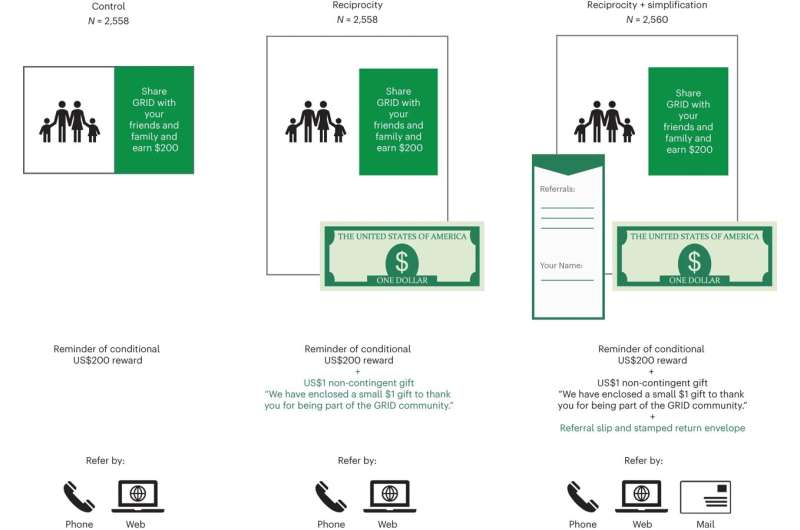August 10, 2023 report
This article has been reviewed according to Science X's editorial process and policies. Editors have highlighted the following attributes while ensuring the content's credibility:
fact-checked
peer-reviewed publication
trusted source
proofread
Small incentive found to boost low-income solar-energy project

A team of researchers studying ways to persuade low-income families to take advantage of free or low-cost solar energy installations confirmed that sometimes it's the small things that can be most persuasive.
Kim Wolske, a professor of environmental psychology at the University of Chicago, teamed up with the non-profit GRID Alternatives of California to see if they could boost participation in a program that provides solar energy systems valued at up to $27,000 to families living at or near poverty levels.
Poor communities, the researchers said, often bear the brunt of oppressive environmental issues such as high energy costs, power outages and pollution.
GRID had some success with an incentive program that offered $200 to families who had systems installed who in turn referred the program to friends. Utilizing peer-incentive programs is commonly used by businesses that understand that potential customers are more likely to respond to offers endorsed by family, friends or acquaintances than they are to pitches from faceless businesses.
Wolske and her team developed three plans to hike participation in the energy savings program, made possible by grants under the Biden administration's Inflation Reduction Act.
"It can sound too good to be true when you've got someone saying we can give you solar panels at no cost," said Wolske.
The first approach was essentially the current plan: a post card reminding current solar-energy system owners of the $200 incentive, along with a toll-free number and web site they can contact.
The second strategy included the above postcard but added a $1 gift as a thank you for their participation in the publicity program.
The third plan added a postage-paid envelope with a referral slip that simplified the reporting process.
While the first approach generated roughly one referral for every 100 clients, the second method doubled that amount, to one referral per 52 clients. The number of solar contracts ultimately obtained rose 250 percent.
The third approach—the small thank you gift plus simplification of referral—generated one referral for every 14 clients.
Overall, the researchers report, solar contracts gained through the $1 gift and simplification approaches yielded 5.2 times the number of contracts gained under the first approach.
Social psychologist Leon Festinger addressed the act of decision making in the 1950s, referring to the "cognitive dissonance" displayed by individuals wrestling with conflicting emotions.
In a Stanford University experiment, Festinger assigned subjects to an extremely boring hourlong task. They were then given either $1 or $20 to persuade others waiting to do the task that it was enjoyable.
When asked at the end of the experiments how they rated the tasks, those paid $1 scored them as more enjoyable than those paid $20.
As explained in a recent Psychology Today summary of the experiment, "If the reward is bigger, we are more likely to conclude that we did it for the benefit of the reward itself. But if the reward is smaller, we are more likely to believe that we did it because we like it better and enjoy it more."
Festinger would explain that a smaller reward allows one to rationalize that a task was done from intrinsic motivation, doing something for its own sake, which is more satisfying than if they were paid a larger sum.
The small $1 gift (on top of the promised $200) in the solar-energy experiment may be seen as a significant motivator that allowed participants to feel they were acting on an inherently good proposal.
"The strategies we've identified could work for other energy assistance programs, from heating and insulation upgrades to electric vehicle incentives," Wolske said. "The ultimate goal is to extend the reach of these programs, making our energy systems more efficient, cleaner and inclusive."
The report, "Increasing the reach of low-income energy programmes through behaviorally informed peer referral," appeared in Nature Energy online July 6.
More information: Kimberly S. Wolske et al, Increasing the reach of low-income energy programmes through behaviourally informed peer referral, Nature Energy (2023). DOI: 10.1038/s41560-023-01298-5
© 2023 Science X Network



















